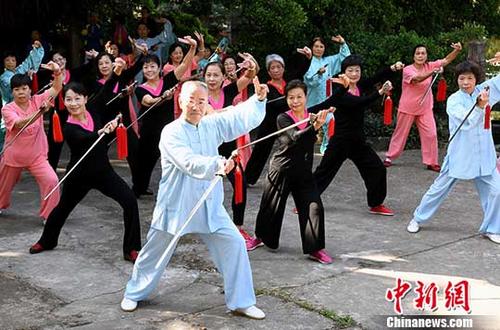Highlights of China's elderly care over past five years
China has been running at full tilt to foster a social environment in which senior citizens are respected, cared for and live happily in the span of the 13th Five-Year Plan (2016-2020), given the country's fast-growing aging population.
By the end of 2019, China had a population of 254 million aged 60 or above, accounting for 18.1 percent of the national population. The number is expected to exceed 300 million in the next five years, according to the Ministry of Civil Affairs.
While the aging population brings pressure to the Chinese society, it also provides great potential for the rise of the silver economy, which may boost employment and stimulate consumption.
The following facts and figures indicate the nation's accomplishments in elderly care and the efforts behind them:
-- Old-age pension brings more sense of security. About 970 million people were covered in the old-age pension insurance system as of 2019, increasing from 890 million in 2016.
The basic pension for retirees and the minimum basic old-age pension for rural and non-working urban residents have been increased this year, and the country has pledged to ensure the payments of pension funds on time and in full.
-- More support has been provided for elderly people with special difficulties. As of the end of 2019, the country's urban and rural subsistence allowances covered a total of 14.47 million elderly people, and more than 35 million had enjoyed various types of welfare and subsidy for seniors.
-- Elderly care service facilities have been further developed. China had nearly 220,000 eldercare service institutions and facilities at the end of June, offering over 7.9 million beds for senior citizens, which registered a year-on-year growth of 26.6 percent and 7.7 percent respectively.
-- Elderly care personnel will be increased and better trained. The country has removed the demands of educational background in the sector to solve the shortage and pledged to ensure that 10,000 nursing home directors and 100,000 part- or full-time social workers in the field would be trained by the end of 2022.
-- Efforts are being made to meet the diverse demands of senior citizens. The central government has allocated 5 billion yuan (about 743.38 million U.S. dollars) over the past five years to support pilot programs on home-based elderly care services and health care supported by communities in 203 cities.
-- Smart elderly care products, emerging as a result of fast applications of internet technology, are forming a new area of business growth. China's smart elderly care industries have a market value of 3.2 trillion yuan in 2019, with a compound annual growth rate of over 18 percent in recent three years, and the figure is expected to surpass 4 trillion yuan this year.
Meanwhile, the government has planned to help develop over 100 leading enterprises in the smart health and elderly care sector by 2020.

